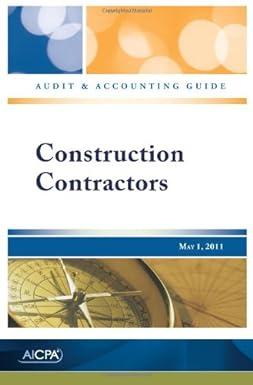Question
Employee compensation is an accounting issue that affects every company. Due to the costs, and risks, to the employer, defined benefit pensions are not common
Employee compensation is an accounting issue that affects every company. Due to the costs, and risks, to the employer, defined benefit pensions are not common in newer or smaller companies. However, they still exist for many large companies that have been in existence for long periods of time. The accounting for these plans is anything but straightforward and easy to apply. The disclosures related to these pensions are far more extensive than the numbers that show up on the face of the financial statements. In fact, the bulk of the calculations required are for the disclosures. The projected benefit obligation (PBO) and the fair value of pension fund (FVPF) are numbers that are used extensively in the calculations. The PBO and FVPF are offset against each other and then reported in net on the balance sheet as the pension-related asset/liability. In addition, detailed disclosures are required for the accounts: PBO, FVPF, and Accumulated Other Comprehensive Income (AOCI) which includes deferred pension gains and losses and prior service cost. Pension expense is reported on the income statement and is the sum of service cost and interest cost less the expected return on the pension fund. In addition, pension expense can be affected by the actual return on the pension, amortization of prior service cost and deferred gain or loss. Other benefits are provided to retirees besides pensions. The accounting for them is similar to pensions, but there are some differences. A Wall Street Journal article discussed a $1.8 billion charge to income made by General Electric for postretirement benefit costs. It was attributed to previously unrecognized healthcare and life insurance cost. As financial vice president and controller for Peake, Inc., you found this article interesting because the president recently expressed interest in adopting a postemployment benefit program for Peakes employees, to complement the companys existing defined benefit plan. The president, Martha Beyerlein, wants to know how the expense on the new plan will be determined and what impact the accounting for the plan will have on Peakes financial statements.
(a) As financial vice president and controller of Peake, Inc., explain the calculation of postemployment benefit expense under GAAP, and indicate how the accounting for the plan will affect Peakes financial statements.
(b) Discuss the similarities and differences in the accounting for the other postemployment benefit plan relative to the accounting for the defined benefit plan.
Step by Step Solution
There are 3 Steps involved in it
Step: 1

Get Instant Access to Expert-Tailored Solutions
See step-by-step solutions with expert insights and AI powered tools for academic success
Step: 2

Step: 3

Ace Your Homework with AI
Get the answers you need in no time with our AI-driven, step-by-step assistance
Get Started


